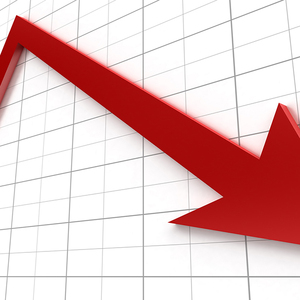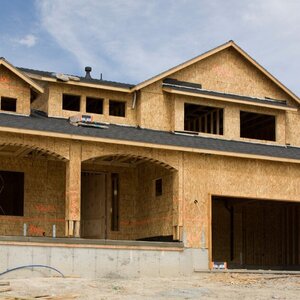The WPJ
THE WORLD PROPERTY JOURNALReal Estate Facts Not Fiction
Residential Real Estate News

Home Buying in U.S. Softens in Late 2018, Says NAR
Residential News » Miami Edition | By Michael Gerrity | December 19, 2018 9:04 AM ET
According to a new survey by the National Association of Realtors show that despite a favorable view on the economy and the direction of U.S. home prices, the sentiment on home buying continued to diminish at the close of 2018.
NAR further reports that consumer sentiment about home buying weakened in the fourth quarter with only 34 percent strongly indicating it is now a good time to buy, down from 39 percent in the third quarter and 43 percent one year ago. The percentage of those who believe that is not a good time to buy was unchanged in the fourth quarter, remaining at 37 percent, though up from 28 percent one year ago.
NAR's fourth quarter Housing Opportunities and Market Experience survey also found that a majority of those polled, 59 percent, believe that the economy is improving. Optimism is the greatest among those who earn $50,000 or more. Fifty-three percent of those in urban areas said the economy is improving, compared to 71 percent of respondents in rural areas.
NAR's chief economist Lawrence Yun says rapid price increases have affected the marketplace. "Consistently fast-rising home prices well in excess of income growth over recent years have left buyers frustrated while slowly enticing would-be sellers to consider listing."
From 2012 to 2018, median home prices rose 44 percent, while average hourly wage earnings increased by just 16 percent. NAR's most recent survey asked about home prices over the last 12 months. Sixty-three percent of respondents feel that prices have increased in their communities over the last 12 months, down from the third when 70 percent of respondents believed that prices had increased. Thirty percent feel housing prices within their communities have remained the same.
Americans living in the West, those with annual incomes of over $100,000 and those 45 to 54 years of age are most likely to report that prices have increased in their neighborhoods. Additionally, 67 percent of homeowners, 56 percent of renters and 50 percent of those living with someone else also felt home prices in their communities increased. Forty percent of those earning less than $50,000 reported that home prices had stayed the same. The national median home price as of October was $255,400, compared to $382,900 in the West.
Respondents were also asked for their views on home prices in the next six months. Forty-one percent predict home prices in their communities will stay the same, unchanged from last quarter but up slightly from 40 percent in 2018's second quarter.
Of those who said the economy is advancing, 59 percent live in the West, which Yun found interesting. "The West region has a strong job-creating economy, yet it is the West region showing the weakest buyer sentiment because the West region is the least affordable," said Yun.
Among those who do not presently own a home, 29 percent of those polled said that it would be very difficult to qualify for a mortgage and 30 percent believe that it would be somewhat difficult given their current financial situation (compared to 28 and 31 percent last quarter).
Yun says some of the fourth quarter findings imply that the softening home buying sentiment is less a result of potential buyers holding off purchases in anticipation of lower home prices, but more related to concerns over qualifying for a higher mortgage and the lack of access to affordable home listings. "Perhaps some communities designated as Opportunity Zones can draw real estate developers using tax incentives to build affordable housing," Yun said.
NAR further reports that consumer sentiment about home buying weakened in the fourth quarter with only 34 percent strongly indicating it is now a good time to buy, down from 39 percent in the third quarter and 43 percent one year ago. The percentage of those who believe that is not a good time to buy was unchanged in the fourth quarter, remaining at 37 percent, though up from 28 percent one year ago.
NAR's fourth quarter Housing Opportunities and Market Experience survey also found that a majority of those polled, 59 percent, believe that the economy is improving. Optimism is the greatest among those who earn $50,000 or more. Fifty-three percent of those in urban areas said the economy is improving, compared to 71 percent of respondents in rural areas.
NAR's chief economist Lawrence Yun says rapid price increases have affected the marketplace. "Consistently fast-rising home prices well in excess of income growth over recent years have left buyers frustrated while slowly enticing would-be sellers to consider listing."
From 2012 to 2018, median home prices rose 44 percent, while average hourly wage earnings increased by just 16 percent. NAR's most recent survey asked about home prices over the last 12 months. Sixty-three percent of respondents feel that prices have increased in their communities over the last 12 months, down from the third when 70 percent of respondents believed that prices had increased. Thirty percent feel housing prices within their communities have remained the same.
Americans living in the West, those with annual incomes of over $100,000 and those 45 to 54 years of age are most likely to report that prices have increased in their neighborhoods. Additionally, 67 percent of homeowners, 56 percent of renters and 50 percent of those living with someone else also felt home prices in their communities increased. Forty percent of those earning less than $50,000 reported that home prices had stayed the same. The national median home price as of October was $255,400, compared to $382,900 in the West.
Respondents were also asked for their views on home prices in the next six months. Forty-one percent predict home prices in their communities will stay the same, unchanged from last quarter but up slightly from 40 percent in 2018's second quarter.
Of those who said the economy is advancing, 59 percent live in the West, which Yun found interesting. "The West region has a strong job-creating economy, yet it is the West region showing the weakest buyer sentiment because the West region is the least affordable," said Yun.
Among those who do not presently own a home, 29 percent of those polled said that it would be very difficult to qualify for a mortgage and 30 percent believe that it would be somewhat difficult given their current financial situation (compared to 28 and 31 percent last quarter).
Yun says some of the fourth quarter findings imply that the softening home buying sentiment is less a result of potential buyers holding off purchases in anticipation of lower home prices, but more related to concerns over qualifying for a higher mortgage and the lack of access to affordable home listings. "Perhaps some communities designated as Opportunity Zones can draw real estate developers using tax incentives to build affordable housing," Yun said.
Sign Up Free | The WPJ Weekly Newsletter
Relevant real estate news.
Actionable market intelligence.
Right to your inbox every week.
Real Estate Listings Showcase
Related News Stories
Residential Real Estate Headlines
- Orlando's Housing Market Continues to Slow Down This Fall
- U.S. Mortgage Originations Predicted to Hit $1.95 Trillion in 2024
- Construction Input Costs in America Uptick in September
- Global Home Price Growth Further Slows in Mid-2023
- Home Values in U.S. Begin to Slip Late Summer
- Foreclosure Filings in U.S. Spike 34 Percent Annually in Q3
- U.S. Mortgage Credit Availability Upticks in September
- Retail Market is a Bright Spot for Manhattan Real Estate
- Residential Rents in U.S. Dip in September Amid Growing Apartment Supply
- U.S. Mortgage Rates Continue to Surge in October
- Greater Las Vegas Home Sales Down 10 Percent Annually in September
- Most U.S. Homebuyers Say Buying a Home is More Stressful Than Dating in 2023
- Mortgage Applications Dive 6 Percent Last Week in America
- Despite Peak Interest Rates, Global Housing Markets Improved in Q2
- U.S. Architecture Billings Index Reports Softening Business Conditions in August
- U.S. Home Price Growth Pace Upticks Again in August
- 10,000 Residential Properties Have Negative Equity in Hong Kong
- U.S. Pending Home Sales Dropped 7.1 Percent in August
- U.S. Mortgage Rates Reach Highest Level in 23 Years
- American Bankers See Weakening Credit Conditions Through End of 2024
- Palm Beach Area Residential Sales Uptick in August
- Driven by High Mortgage Rates, Pending Home Sales Drop 13% Annually in September
- Miami Area Residential Sales Slip 13 Percent Annually in August
- U.S. Home Sales Dip 15 Percent Annually in August
- Home Flipping Transactions Down in 2023, Profits Up
- U.S. Listings Inventory Rises 4 Percent in August
- The Fed Leaves Rates Alone for Now in September
- Mortgage Applications Uptick in U.S. Amid High Rates
- Single Family Rent Growth in U.S. Drops to 3-Year Low in July
- Greater Orlando Area Home Sales Down 16 Percent Annually in August
- Home Purchase Cancellations Accelerating in the U.S.
- U.S. Construction Input Costs Uptick in August
- U.S. Mortgage Credit Availability Upticks in August
- Monthly Property Foreclosure Activity Upticks in U.S.
- Greater Palm Beach Area Residential Sales Dip 5 Percent Annually in Mid-2023
- NAR Predicts Several U.S. Housing Market Outcomes
- Demand for U.S. Housing is Dropping as Prices Rise
- U.S. Homeowner Equity Decrease by $287 Billion Over the Last 12 Months
- 1 in 5 Millennials Think They'll Never Own a Home in America
- 1 in 8 San Francisco Home Sellers Is Losing Money at Closing in 2023
Reader Poll
Marketplace Links
This website uses cookies to improve user experience. By using our website you consent in accordance with our Cookie Policy. Read More





